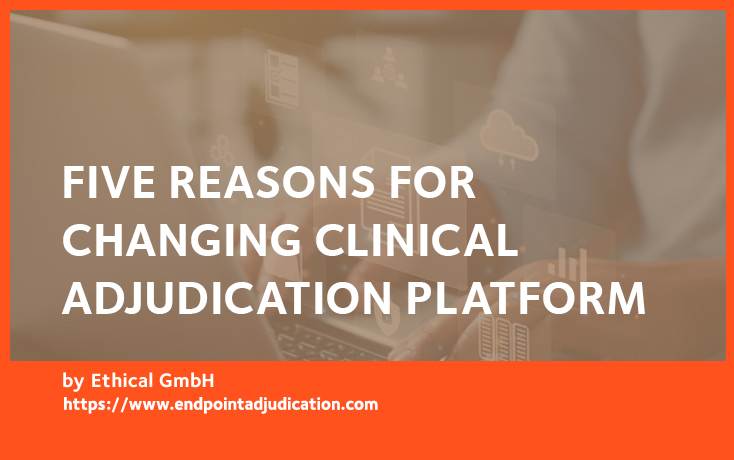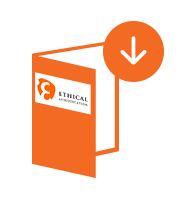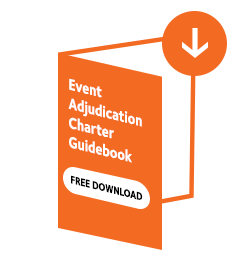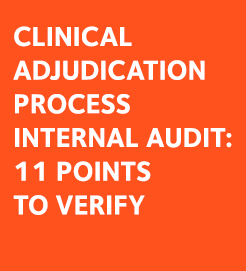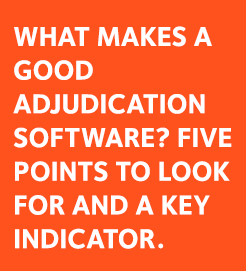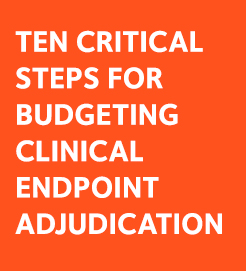Older clinical trial computer systems have their limits. Having to change clinical adjudication platform is therefore not unusual. Are you aware of the reasons why organizations — sponsors and CROs — migrate to new, more efficient systems? A good understanding of the reasons that can advocate for change will help exercise sound judgement when the time for migrating system has come.
Changing a software platform with many users in mid-course is certainly not a simple thing to do and the decision to do so must be carefully weighed. Beyond the burden of change for all involved, the need to train in a new tool, the transfer of content and the validation of the new system, there may be cost implications, penalties for breaching a contract and difficulties in merging the data due to incompatibilities between old and new software. Why, then, even consider such a change? If the old system did the job yesterday, why can’t it do it tomorrow?
Here are five reasons that can advocate for change:
1. Ease the process
Many older systems need lengthy manual operations for all functionalities. This may not be an issue for smaller studies, but if you decided to use the same system in a large trial you may find the process of collecting, organizing, and sharing data unnecessarily overwhelming.
A newer software allowing seamless integration with such sources as EDC systems, safety databases or DICOM/PACS clinical imaging databases will greatly streamline the process. When many repetitive tasks are involved, automation features can make a big difference for users too. Lastly, intuitive navigation and user-friendly interfaces as found on well-designed, newer systems support process flow.
2. Expand access
Many older systems, although well suited for a particular task, were built with limited capacities. Restrictions and limitations to the access, either by the number (limited scalability) or by the functions (limited expandability) can create unwanted and limiting red lines in the usage of a system. Once again, what seemed to work fine in a simpler setting yesterday, may not work in a more complex setting today.
3. Ensure compliance
Rules and regulations evolve over time. What never changes is the obligation to abide by them. Compliance is not a negotiable feature and older systems may not be able to comply with all current requirements of security, traceability, audit trail or archiving. It is unfortunate to discover that one or more of the compliance requirements are not met in mid-study but, if it happens, it cannot be ignored and should be dealt with. Migration to a newer system may be the best or even the only solution.
4. Improve reporting and data export
Adjudication results eventually make their way into the clinical database and integrate with other clinical data collected during the study. While the ability to support review and decision is key to an adjudication platform, the functionalities of reporting and data export are equally critical… but not always equally considered. You may find out after the first attempts that your old system is not at the height of the situation. Manual data transfer is a long, costly, and risky operation. If you find yourselves in this situation, it is probably just about time to consider migrating to a newer system.
5. Consolidate applications
Many older systems are just “systems”, which means a collection of several applications, each one covering a specific function interconnected into a “system”. Such settings may have worked well in the past and even look as if they have advantages (such as integrating existing tools in a “smart” way). However, maintaining such systems requires keeping each of the parts in place with no or little possibility for evolution. As improvements and evolution occur in the parts, the combination looks less interesting. Migrating towards a tool like eAdjudication® that integrates all the necessary functionality in one simple interface is an attractive solution.
In summary, certain circumstances may impose a change of clinical adjudication system and even make it a preferrable solution above all others. But the decision is not always straightforward and requires understanding the limits of the older systems and the possibilities offered by innovative solutions.
Do you need help to assess your current clinical adjudication system and to better understand how a newer system that leverages the latest innovations could help you solve your challenges? Please do not hesitate to contact us. We understand that migrating to a new system can appear uncomfortable and somewhat risky but, with expertise and proper planning, a software vendor like Ethical can safely guide you through the migration process. Keep posted for more information on this important topic.
eADJUDICATION®: COMPLIANT AND COST-EFFECTIVE ENDPOINT ADJUDICATION COMMITTEES MANAGEMENT
eAdjudication® offers such flexibility that the software configuration and support provision are tailored to exactly match your need.



